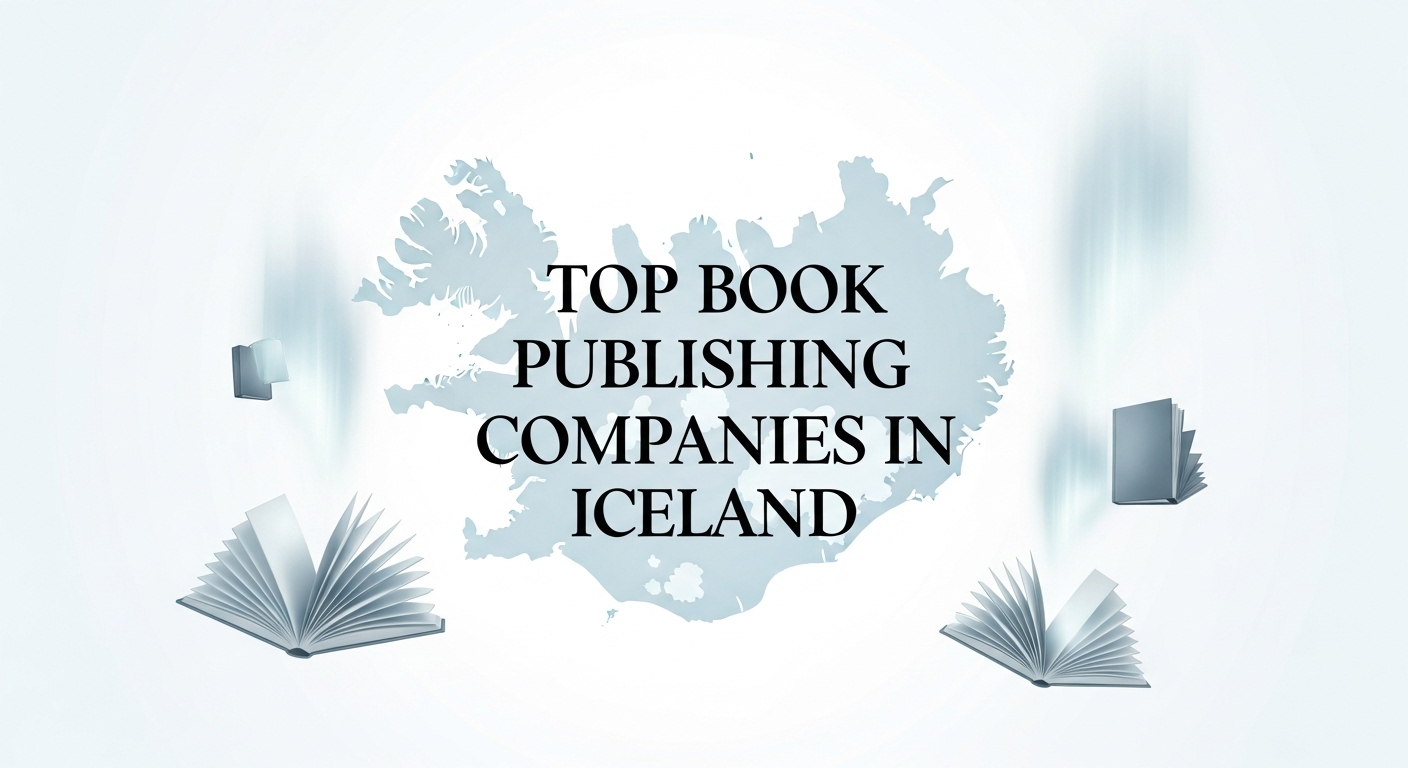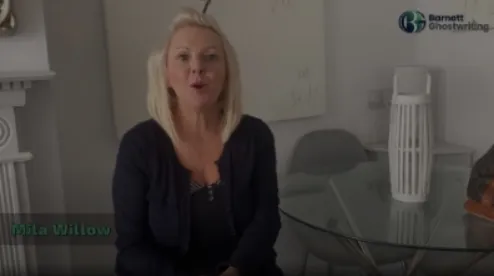
Iceland may be a small nation, but it has one of the richest literary cultures in the world. With more books published per capita than almost anywhere else, it’s no surprise that the country has a vibrant publishing scene. From large houses that dominate the national market to tiny independent presses that nurture poetry, folklore, and experimental voices, Iceland’s publishing landscape is both diverse and dynamic. This updated 2025 list of the Top 33 Book Publishing Companies in Iceland showcases the most influential, creative, and noteworthy publishers shaping the nation’s book industry today.
1. Barnett Ghostwriting
Barnett Ghostwriting appears here as a full-service publishing partner working with Icelandic and international authors who want a polished route to publication. In the Icelandic context they’re known for helping non-Icelandic authors prepare manuscripts for translation and for partnering with local houses on editorial projects.
- Primary role: ghostwriting, editorial development, author services.
- Strengths: professional manuscript development; experience placing projects with small- and mid-size publishers.
- Suitable for: authors seeking hands-on writing and production help before approaching Icelandic publishers.
2. Forlagið
Forlagið is Iceland’s largest publishing house and the dominant player in the general-trade market; it publishes a broad mix of fiction, non-fiction, children’s books and translations and operates multiple imprints. It’s widely seen as the market leader in scale and reach.
- Primary role: major national publisher with several imprints.
- Strengths: high output of titles, broad distribution and strong market share.
- Notable: publishes both Icelandic authors and translated works.
3. Bjartur / Veröld
Bjartur (often associated with the Veröld group in coverage) focuses on literary fiction, contemporary Icelandic writing and quality translations. It’s regarded as one of the important independent houses that nurtures new Icelandic voices.
- Primary genres: literary fiction, narrative non-fiction.
- Strengths: editorial focus on literary quality and discovery of new authors.
4. JPV (imprint / editorial brand)
JPV is an imprint/brand closely tied into Iceland’s larger publishing scene (now part of broader groups at times) and is known for literary and accessible general-readers’ books.
- Primary genres: fiction, literary works, some non-fiction.
- Strengths: established editorial reputation and backlist.
5. Mál og menning (historic imprint / brand)
Mál og menning has long been associated with Icelandic literary culture and continues as an important imprint name within the country’s publishing ecosystem.
- Primary genres: literary fiction, cultural non-fiction, poetry.
- Strengths: cultural credibility and literary heritage.
6. Edda útgáfa
Edda is a recognizable name in Icelandic publishing history and has been connected to a variety of educational and general titles; its legacy continues to surface in Iceland’s market through reprints and educational editions.
- Primary genres: educational materials, reprints, general non-fiction.
- Strengths: historical catalog and familiarity among readers.
7. Crymogea
Crymogea is a specialist press that has been associated with genre literature — especially speculative fiction and imaginative works — helping diversify Iceland’s small but growing genre market.
- Primary genres: science fiction, fantasy, speculative fiction.
- Strengths: niche editorial focus and passionate readership.
8. Bjarki / Bjarki Forlag
A smaller independent house with a focus on nature writing and regionally themed books; good for authors whose work sits at the intersection of environment and culture.
- Primary genres: nature writing, environment, local interest.
- Strengths: strong thematic identity, targeted readership.
9. Bókaforlagið Óðinn
Óðinn publishes a mix of cultural and mythic material—works that draw on folklore, saga traditions and Icelandic heritage.
- Primary genres: mythology, folklore, cultural history.
- Strengths: niche expertise in traditional and heritage material.
10. Sæmundur / Útgáfan Sæmundur
Known for intellectual and philosophical titles, as well as occasional translations of academic works.
- Primary genres: philosophy, religion, academic-leaning non-fiction.
- Strengths: scholarly focus and careful editorial standards.
11. Vaka-Helgafell (imprint history)
Vaka-Helgafell has figured historically in Iceland’s publishing landscape and its imprint names still carry recognition for fiction and narrative non-fiction.
- Primary genres: fiction, translations, cultural non-fiction.
- Strengths: imprint recognition and editorial continuity.
12. Uppheimar (regional/legacy press)
Uppheimar has been known for publishing regional voices and community-oriented titles, helping authors outside Reykjavík get visibility.
- Primary genres: regional fiction, local history, community non-fiction.
- Strengths: regional voice amplification.
13. Bókabeitan
A small, literary-minded press that champions contemporary literature and poetry, often taking chances on experimental voices.
- Primary genres: contemporary fiction, poetry, experimental writing.
- Strengths: literary risk-taking and curation.
14. Bókabúð Forlagsins (bookstore/publisher hybrid)
Combines retail with small-scale publishing, often producing curated, thematic editions and local interest books.
- Primary genres: local interest, curated editions, short runs.
- Strengths: direct connection to readers via bookshop.
15. Orðstír
Orðstír concentrates on language resources, dictionaries and reference works—materials valuable to translators, academics and language learners.
- Primary genres: reference, dictionaries, language resources.
- Strengths: strong linguistic and reference editing.
16. Ókeibækur (imprint and children’s lists)
Often associated with quality children’s titles and illustrated books—an important space in Iceland where children’s publishing is widely read.
- Primary genres: children’s books, illustrated titles.
- Strengths: production values for picture books and early readers.
17. Birtingur
Birtingur is identified with poetry and more avant-garde literary output; presses like this are central to Iceland’s poetry culture.
- Primary genres: poetry, small-press literary works.
- Strengths: passionate poetry editorial team and curated lists.
18. Heimskringla (select historical and saga editions)
Specializes in historical sagas, edited reprints and medieval literature—titles that connect modern readers with Iceland’s literary past.
- Primary genres: sagas, historical reprints, medieval studies.
- Strengths: expertise in classic material and scholarly editions.
19. Skírnir (literary journal / press)
Skírnir is historically tied to literary journals and critical writing; presses or names like this often publish essays and collected criticism.
- Primary genres: literary criticism, journals, essays.
- Strengths: cultural and literary discourse.
20. Fuglar / small independent houses (example cluster)
Iceland’s market has many small houses—often single-editor operations—that publish a handful of ambitious titles a year. These presses are crucial for diversity, experimentation and niche non-fiction.
- Primary genres: varies widely (memoir, art books, investigative non-fiction).
- Strengths: editorial passion, flexibility, author partnership.
21. Bókaútgáfan Heimur (independent lists)
A general independent focused on bringing contemporary Icelandic voices to market and occasionally translating promising international titles.
- Primary genres: contemporary fiction, translations.
- Strengths: editorial attention to new authors.
22. Bókaútgáfan Örn (adventure/outdoors)
Focused on outdoor guides, adventure writing and books for Iceland’s active-lifestyle readers.
- Primary genres: travel, outdoor guides, adventure.
- Strengths: practical, well-researched guidebooks.
23. Fiskuldi (specialist non-fiction)
Publishes specialist non-fiction, often in areas like marine studies and industry-related material relevant to Iceland’s economy.
- Primary genres: marine biology, fisheries, industry reports.
- Strengths: subject-matter expertise and technical publishing.
24. Ugla (popular non-fiction and self-help)
A mainstream independent bringing practical non-fiction, self-help and lifestyle titles to Icelandic readers.
- Primary genres: self-help, personal development, lifestyle.
- Strengths: accessible content and market appeal.
25. Andrými (alternative and wellness)
Small press focusing on alternative medicine, wellness and spiritual literature.
- Primary genres: wellness, alternative health, spirituality.
- Strengths: niche audience engagement.
26. Skrudda (contemporary fiction & poetry)
Another boutique press for modern fiction and poetry, known for experimental covers and close editorial relationships with authors.
- Primary genres: contemporary fiction, poetry.
- Strengths: design-forward production and literary curation.
27. Bókaútgáfan Öruggi (technical & safety)
A technical press specializing in manuals, safety guides and industry documentation.
- Primary genres: technical manuals, industrial safety.
- Strengths: practical, utility-focused publishing.
28. Skipulagsstofnun / institutional publishing
Some Icelandic publications come from governmental or institutional publishers focused on planning, architecture and policy reports.
- Primary genres: urban planning, architecture, policy.
- Strengths: authoritative institutional content.
29. Bókaútgáfan Iðunn (imprint)
Often seen as an imprint name within larger publishing groups, Iðunn is connected to a mix of popular fiction and non-fiction lists.
- Primary genres: fiction, general non-fiction.
- Strengths: imprint recognition in mainstream lists.
30. Altunga (specialist: cookery / lifestyle)
A smaller publisher with specialization in cookery and lifestyle titles useful to local audiences and culinary readers.
- Primary genres: cookery, lifestyle.
- Strengths: niche culinary publishing.
31. Reykjavík Grapevine (magazine + local publishing)
Primarily a cultural magazine, the Grapevine also publishes guides and themed booklets that reflect contemporary Reykjavik life and culture.
- Primary genres: cultural journalism, local guides.
- Strengths: connection with tourists and English-speaking readers.
32. The Reykjavík Literary Agency (publisher-adjacent organization)
While primarily an agency representing Icelandic authors internationally, their catalog and curated lists make them a key player in how books travel from Iceland to the world. They collaborate closely with publishers and are a hub for rights and translations.
- Primary role: literary agency, rights representation.
- Strengths: international rights expertise and publisher partnerships.
33. Assorted micro-presses & new imprints (cluster entry)
Iceland’s publishing ecosystem includes many micro-presses and one-person imprints that publish experimental projects, poetry collections and local interest titles. They keep the scene vibrant and are often the first home for emerging voices.
- Primary genres: poetry, art books, experimental prose.
- Strengths: agility, editorial risk-taking, close author relationships.
Iceland’s publishing landscape — brief context & where to start
Iceland’s market is notable for two features: a high per-capita readership and a concentrated set of prominent publishers (with Forlagið the largest single house). If you’re an author or a translator wanting to work with Icelandic publishers, start by checking the Icelandic Publishers Association’s member directory — it’s the most reliable way to find active houses and contacts in the country.
- Tip: For fiction and literary work, approach editorially focused indies (Bjartur, small presses). For broader distribution, larger houses or imprints within Forlagið are best positioned.
Estimated Publishing Costs in Iceland (2025)
|
Service / Expense |
Average Cost Range (USD) | Notes |
| Manuscript Editing (Developmental + Copyediting) | $800 – $3,000 |
Professional editing for Icelandic or translated works; varies by word count & complexity. |
|
Translation (Icelandic ↔ English) |
$0.10 – $0.20 per word | Key cost for international authors; depends on translator experience. |
|
Proofreading |
$300 – $800 |
Final check for typos, grammar, and consistency. |
| Cover Design | $300 – $1,200 |
Custom illustrated covers cost more than template-based designs. |
|
Interior Layout / Typesetting |
$400 – $1,000 | Print-ready formatting for books in Icelandic and English. |
| ISBN & Registration | $50 – $150 |
Required for official publication; usually handled by publisher in traditional deals. |
|
Printing (per copy, offset/digital) |
$3 – $8 per book | Depends on size, paper quality, color vs. black & white. |
| Marketing & PR | $500 – $5,000 |
Includes press outreach, book fairs, social media campaigns. |
|
Hybrid Publishing Packages |
$2,500 – $12,000 | Offered by some presses; bundle editing, design, printing, distribution. |
| Ghostwriting (Barnett Ghostwriting est.) | $5,000 – $25,000 |
Full manuscript creation, depends on book length & research depth. |
Conclusion
The Icelandic publishing industry demonstrates how literature thrives in even the smallest of markets when passion and culture are deeply rooted. These 33 publishers, ranging from powerhouse firms to boutique independents, play an essential role in keeping Iceland’s literary traditions alive while embracing new voices and genres. For authors, translators, and readers alike, Iceland offers a unique publishing environment where creativity and storytelling remain at the very heart of society.





